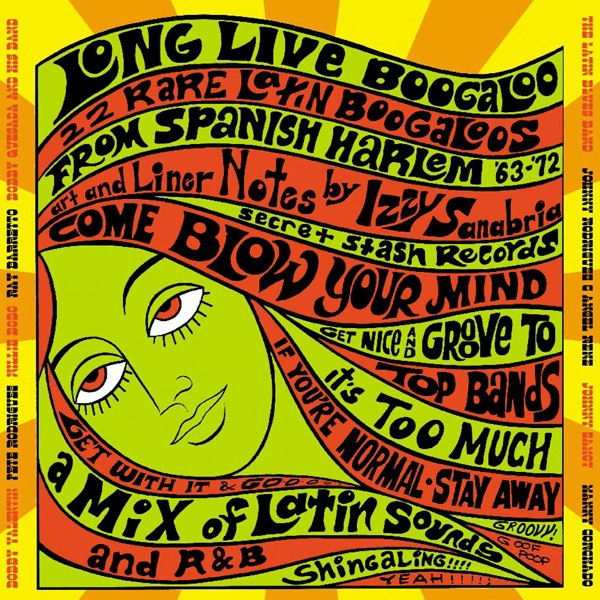Reviews June 21, 2012
Long Live Boogaloo!
Boogaloo was primarily a product of the generation of Latino New Yorker’s who came of age during the mid 60’s. Growing up in close contact with city’s African-American community, they were the recipients of a double dose of cultural patrimony, one that encompassed both the Afro-Cuban music of their parents and the RnB and Doo-Wop of their black peers. While Black and Latin music had been mixed with great success by boundary crossing musicians since at least the 40’s (when Dizzy Gillespie and Chano Pozo inaugurated the genre of Latin Jazz), no fusion had ever been as organically developed or as fully integrated as the one created by boogaloo. While the precise identity genre’s creator will forever be up for debate, it seems clear that the style was originated with Latin groups who were attempting to win over mixed crowds unwilling to dance to strictly Latin music.
As a result, clave was out, and a backbeat was in. The vocals, when there were any, land somewhere between the exhortations of a soul-shouter desperately building a groove and the massed voices of salsa’s call and response, while the lyrics circle around the ever popular trifecta of girls, parties, and shouted nonsense catchphrases (what else?). The horns alternate between the concise punch of Memphis soul bands like the Bar-Kays and the complex sonorities that have long been an Afro-Cuban calling card, while the soloists blow hot and high in a burst of Latin-style brass. The ensembles usually featured large percussion sections that served to flew out the groups sound through the density of their rhythmic underpinning, girding the songs with layers of interlocking rhythms. Notably, the piano often took a lead role in this effort, serving as the primary chording instrument in the place of a soul/funk style rhythm guitar.
The above description is, of course, a generalization, and in no ways does justice to the variety of sounds contained on Long Live Boogaloo, which range from the fairly traditional groove of tracks like “Ritmo Moderno” by Bobby Quesada to swinging jams like “Mia’s Boogaloo,” which sounds like it was made to soundtrack a jet-set party in swinging London. In fact, the only thing that can be said with absolute certainty about the tracks on this compilation is that all of them sound like they were recorded at the decade’s best party, and the life and energy of Friday night palpably hang over the whole thing. We may have missed the boogaloo’s glory days, but at least we have albums like this to remind of us of how good it must have been.
Of all the music that has come through the Afropop office in the past year, few have matched the infectious joy that permeates every cut from this compilation. It’s music that sounds so much like pure, unadulterated fun -- to play and fun to hear. Its rhythms and atmosphere seem perfectly designed to bring a smile to your face. Unfortunately, Boogaloo came from the hard world of Nuyorican music, and the quality of concentrated euphoria demonstrated by the album is as much a product of the genre’s (tragically) short lifespan and simultaneously being a cause of its popularity in the first place. As it happens, boogaloo was cut down in the first flower of its youth by the generational and stylistic competition (not to mention some probable help from the corruption then rampant among promoter, club owners, and label executives). As a result, what we have left to us is a body of music with a sense of expansive possibility untouched by reality. Enjoy what you can because there are no world-weary singers or difficult second albums among these bands.
http://youtu.be/5szMN5xjS34









